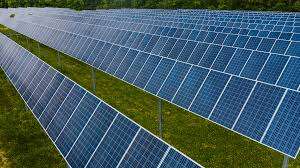In 2025, South Africa’s energy sector is changing fast. New rules, technologies, and a push for clean energy are driving this shift.
The government’s new Integrated Resource Plan (IRP) will guide the country’s power needs through 2050. It includes using coal, renewables, and gas while dealing with the old power plants. There’s a growing demand for more energy and a need for renewable sources like solar power and battery storage.
HAVE YOU READ? New $500 Million Africa50 Fund to Accelerate Renewable Energy and Green Infrastructure Projects
Some key updates:
-The IRP focuses on cleaner energy, but the 2019 version is outdated.
-The Renewable Energy Independent Power Producer Procurement Programme (REIPPPP) is pushing for more renewable projects.
-The threshold for energy generation has increased, allowing smaller companies to contribute to power supply.
However, turning these plans into reality is tough. Investments in infrastructure and grid upgrades are needed. There’s also the risk of high electricity costs, which could slow down the renewable energy transition.
Solar power is booming in South Africa, with more businesses using it. Solar installations, like carports and rooftops, are popular in industries such as agriculture and retail. Battery Energy Storage Systems (BESS) are also growing, helping manage energy costs and power outages.
Electric vehicles (EVs) are slowly taking off, with the government supporting the shift. EV policies, like tax rebates and dedicated taxi lanes in Cape Town, are encouraging this change. But it’s creating more pressure on the energy grid, making renewables even more important.
HAVE YOU READ? Mission 300 Pushes $50 Billion Energy Plan That Will Change Life for Millions in Africa
South Africa is investing heavily in renewable energy to meet global sustainability goals. Private companies are setting net-zero targets to stay competitive.
There’s also more funding for renewable projects. Nearly $450 million in CIF investments has led to nearly $2 billion in co-financing, helping Eskom boost its renewable energy and storage.
These moves are key for the country to meet its renewable energy goals. The IRP targets 26 GW of new renewable capacity by 2030, with a yearly goal of 6 GW of wind and solar.
While South Africa’s shift to renewable energy is strong, it’s not happening fast enough to replace the aging coal plants.
In short, 2025 marks a turning point for South Africa’s energy sector, with a focus on renewables, technological upgrades, and addressing the energy challenges the country faces.









